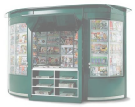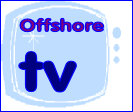© 2014-

Mercur/Nord TV
An ambitious plan, involving co-
Jack Kotschack and the other owners of Sweden’s Radio Nord had long cherished the idea of doing for television what they were already achieving with their radio station -
The problem with television transmissions from a ship is that when the vessel pitches and tosses in rough seas, the transmitted signal is badly distorted and satisfactory reception is virtually impossible on land.
It was only when the Radio Nord directors heard about a technical development in America that the idea of an offshore television station became more than just a dream. The US Navy had managed to develop an aerial system which could be used on board ships anchored at sea to transmit television signals. Exactly how this device solved the 'rolling picture' problem was, of course, top secret, but through various contacts in the American Navy Radio Nord were convinced that they could acquire one of the units for use in their project.
As the Stockholm Archipelago (where the Radio Nord vessel, Magda Maria was anchored) was considered too wide to achieve satisfactory transmissions into the Stockholm city area it was decided that the project would have to be based in the south of the country with programmes beamed to Sweden's next largest centre of population, Malmo, from a vessel anchored in The Sound.
Across The Sound is Denmark and its capital city, Copenhagen, which was already served by an offshore station, Radio Mercur.
Initial discussions took place between the two stations (both of whom were keen on establishing a television service) and a joint venture was officially entered into by Radio Nord and Radio Mercur. A new company -
The joint television service between Radio Nord and Radio Mercur was planned to start in July 1962, but the introduction of pan-



Click on picture to enlarge




Floor 2
Back to








